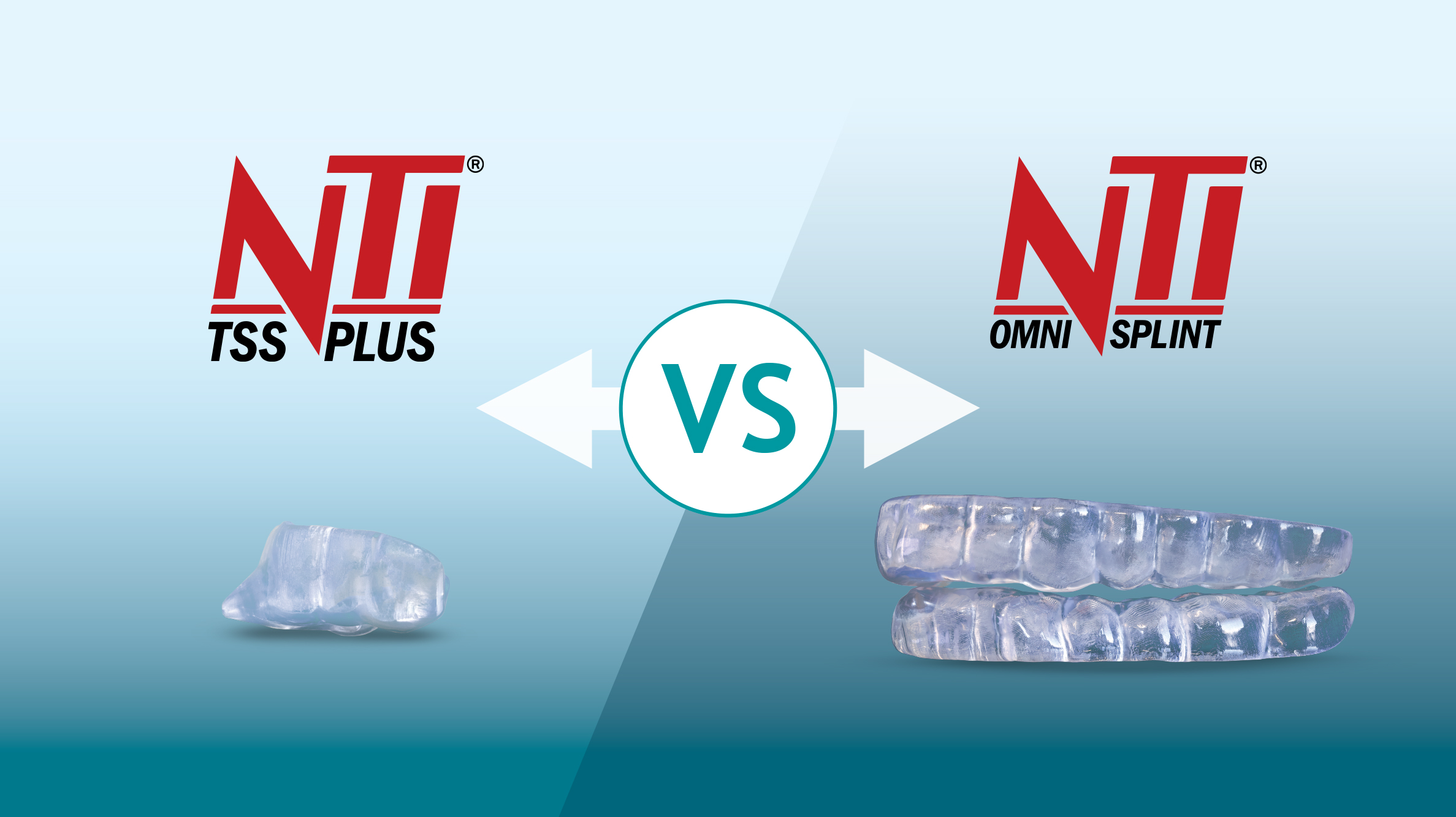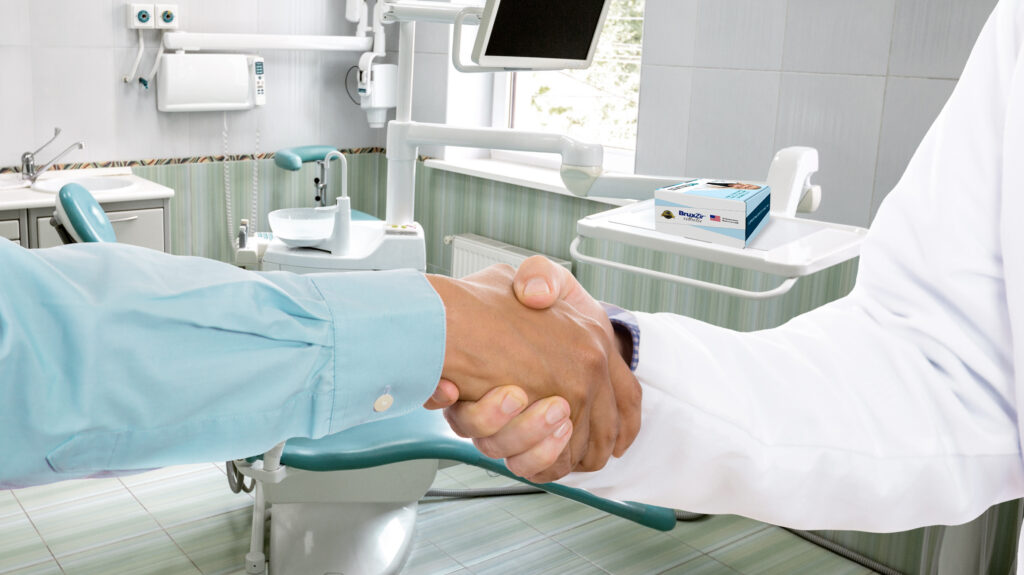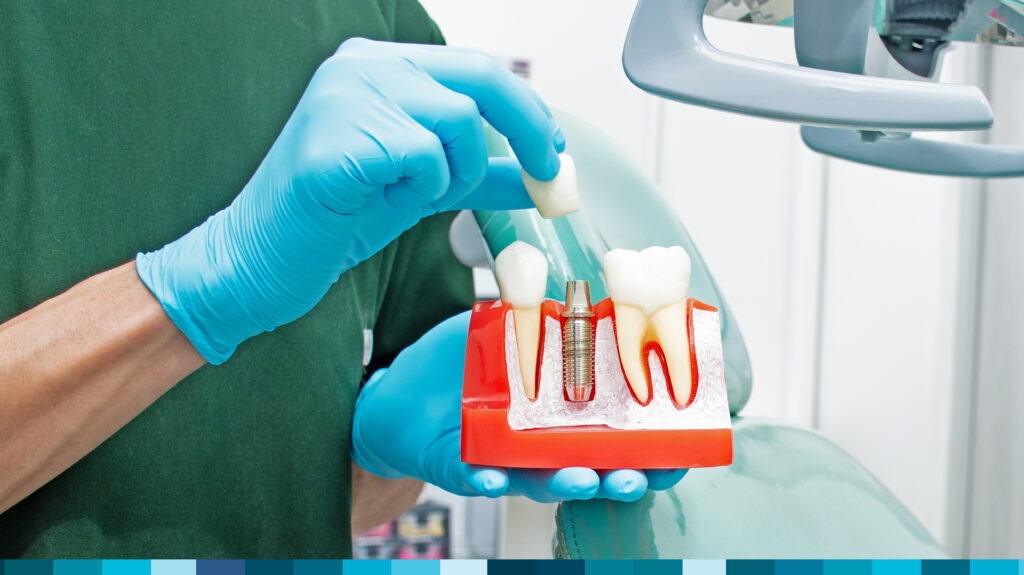Since 2001 when the NTI-tss Plus® (nociceptive trigeminal inhibitor tension suppression system) was cleared by the FDA, migraine prevention therapy has drastically changed. Even new forms of older treatment methods have evolved to meet the demands of over 1 billion people worldwide who are suffering from migraines1 – treatment options like the following:
- Botox®
- Neuromodulation
- Triptans
- Ergot alkaloids
- 5-HT1f medications
- Anticonvulsants
- Beta-blockers
These treatment options have undergone significant testing over the past several decades in order to reduce the number of side effects and improve performance. Just like these methods, the NTI device has also evolved to better meet the needs of migraine patients everywhere.
NTI Devices Available Today
With over 1 million devices prescribed around the world, the NTI-tss Plus is a non-pharmacological, non-surgical treatment option for tension-type headaches and migraines. Its success has been cataloged in research, including a recent study conducted this year and a foundational study that demonstrated how 82% of migraine sufferers experienced a 77% reduction in migraine events while using the NTI-tss Plus.2
The success of the NTI-tss Plus has led to an evolution of the product, which incorporates 21 years of clinical experience from prescribing dentists. The 3D-printed NTI OmniSplint® migraine prevention device similarly reduces clenching intensity but does so through a full-arch design. This development addresses some dentists’ concerns related to appliance size and tooth movement.
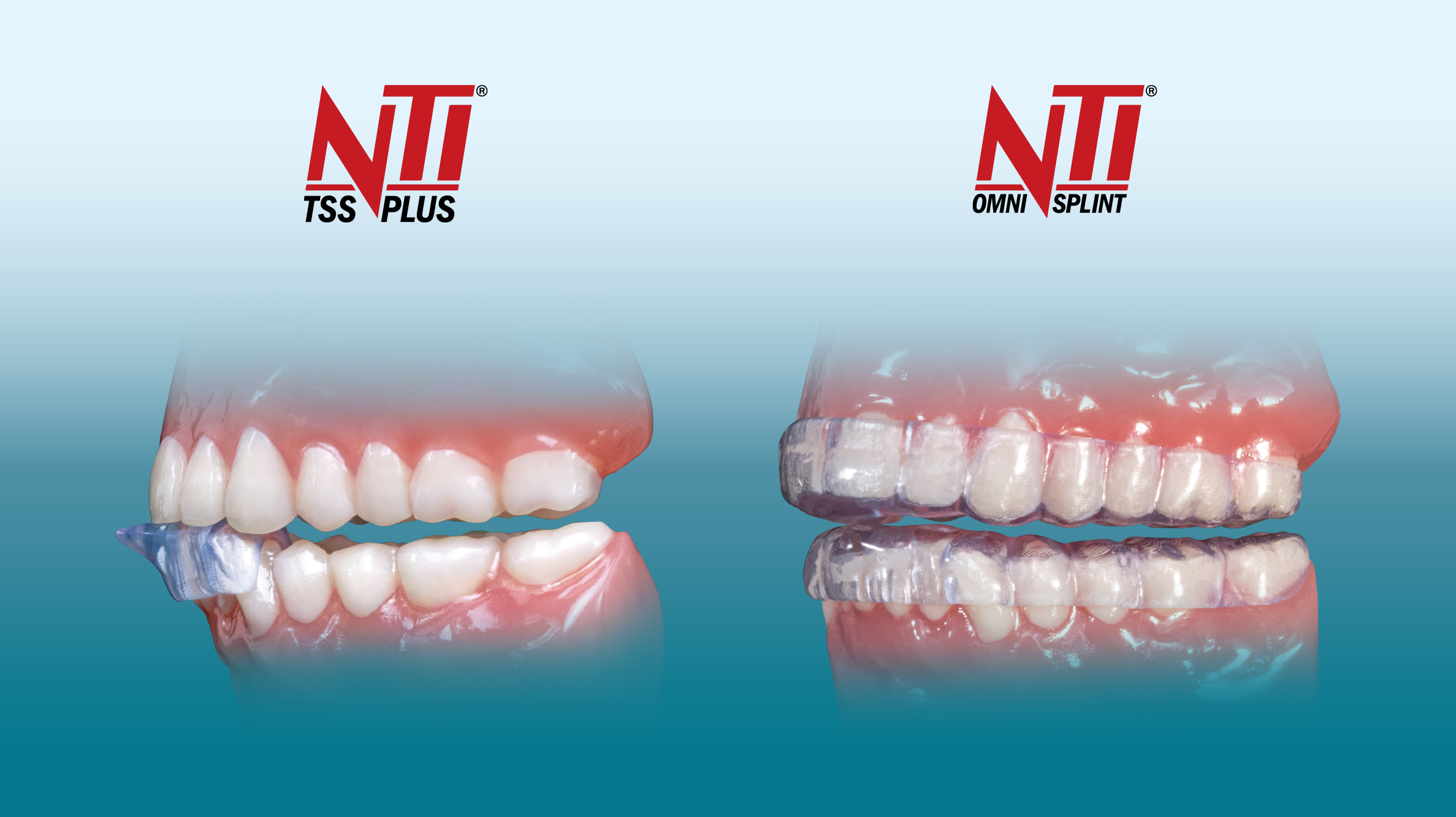
How Are They Different?
The NTI-tss Plus and the NTI OmniSplint can be prescribed to achieve the same goal: getting patients out of pain. Whether it’s jaw muscle tension, temporomandibular disease (TMD) symptoms, tension-type headaches, recurring migraines, or intense nighttime bruxism, an NTI device is ideal for relieving those symptoms by allowing the jaw to sit in its natural position. Because the posteriors and canines don’t touch while the patient is wearing the device, an NTI can also protect dentition and restorations from the harmful effects of clenching.
While both the NTI-tss Plus and the NTI OmniSplint accomplish the same goal, it’s important to know why and when you should prescribe a lower NTI-tss Plus, an upper NTI-tss Plus, or a dual-arch NTI OmniSplint.
For patients who have difficulty with hypersensitive gag reflex, the small size of the NTI-tss Plus may provide a more comfortable experience. The arch selection chart below is helpful for identifying when to prescribe a lower or an upper device.
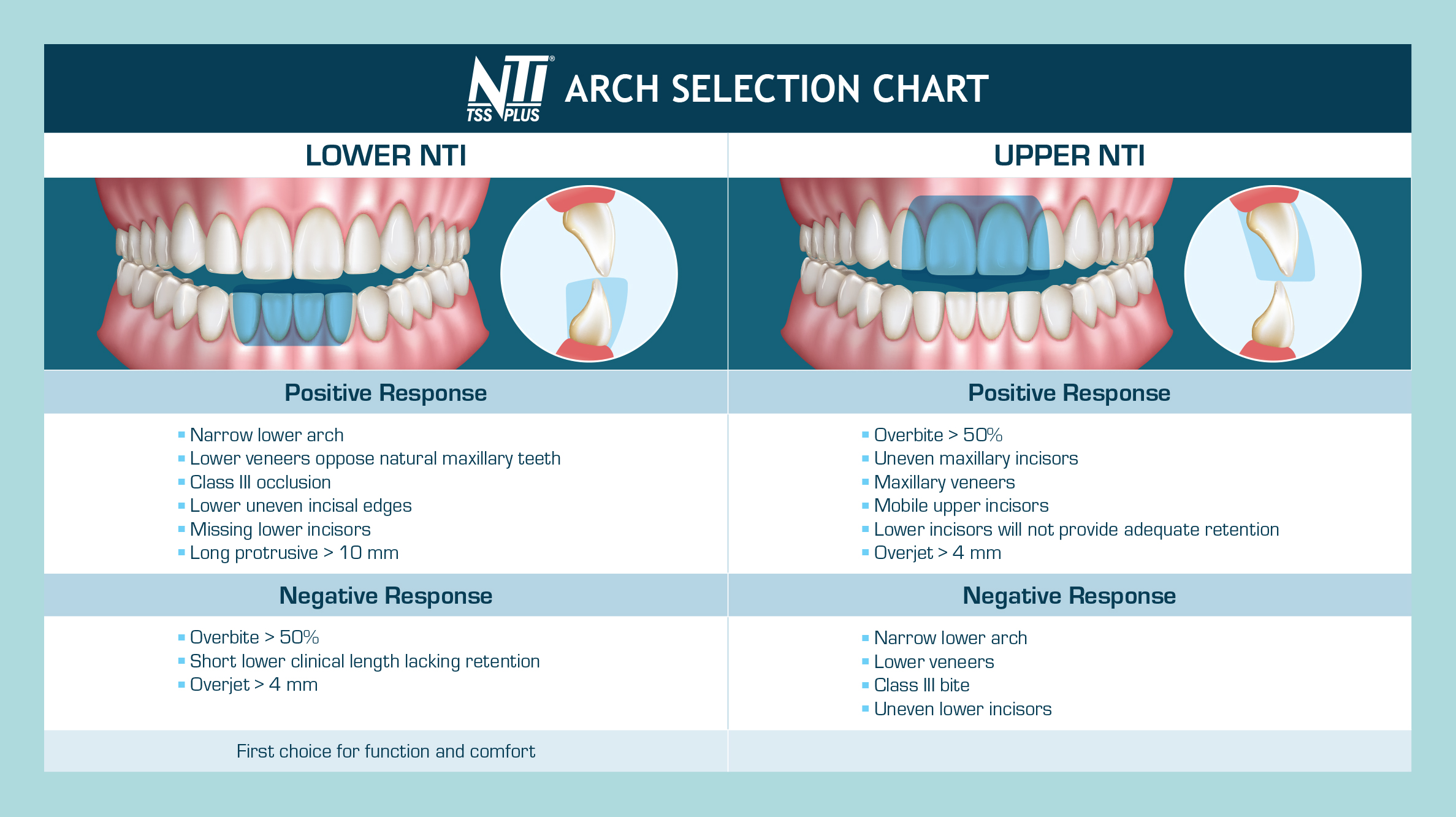
For the NTI OmniSplint device, the dual-arch construction functions like a regular bite splint with the addition of a discluding element on the anterior, which keeps the posteriors and canines out of occlusion. This design is comfortable for the patient and is familiar for those who have worn bite splints in the past.
Does Your Patient Need One?
Almost every migraine patient can benefit from an NTI device. NTI devices are often thought of as “bite splints that can also prevent migraines.” Make a regular habit of asking your patients whether or not they experience frequent headaches, migraines or jaw pain. If they answer in the affirmative, tell them about the NTI devices and their ability to get patients out of pain.
If you do prescribe them an NTI device, an easy way to gauge your patients’ progress is to give them this quick HIT-6™ (Headache Impact Test) questionnaire.

The HIT-6 questionnaire is a great way to measure how a patient is doing with his or her NTI treatment. If the NTI treatment is successful, the patient’s HIT-6 scores will go down. If the NTI is not successful, HIT-6 scores will remain the same or increase. Though uncommon, an unsuccessful NTI treatment may mean that the patient has an underlying condition that needs to be treated by a specialist first.
How to Deliver an NTI Device
NTI devices are easy to deliver. To make sure your patient is receiving the best possible results from his or her NTI device, ensure the following:
- The patient is not capable of dislodging the device with his or her lips or tongue
- The discluding element evenly contacts the opposing midline and the patient has a fairly smooth surface to glide upon in lateral excursions
- There is no canine or posterior contact in any excursions
- Only about 1 mm of freeway space exists between the two closest opposing cusp tips
- The patient can’t protrude beyond the end of the discluding element
The Big Picture
While nociceptive trigeminal inhibitors have existed for decades, some dentists refrain from implementing migraine treatment into their practice. Not only is migraine therapy a tool that can help grow a practice significantly, through increased revenue and patient count, but it also is a simple way to help more patients in need.
For patients who are pregnant, breastfeeding, or taking conflicting prescriptions, the use of oral medications for migraine treatment is often discouraged. Those patients should not have to suffer with pain while a simple, non-pharmacological solution is available through their dentist.
To learn more about the NTI-tss Plus and NTI OmniSplint or to download an Rx, visit newwestlab.com/migraine-prevention.
REFERENCES
- American Migraine Foundation. The Facts About Migraine [Internet]. 2019 Mar 28 [cited 2022 Jul 6]. Available from: https://americanmigrainefoundation.org/resource-library/migraine-facts/.
- Shankland WE 2nd. Migraine and tension-type headache reduction through pericranial muscular suppression: a preliminary report. Cranio. 2001;19(4):269-78.

